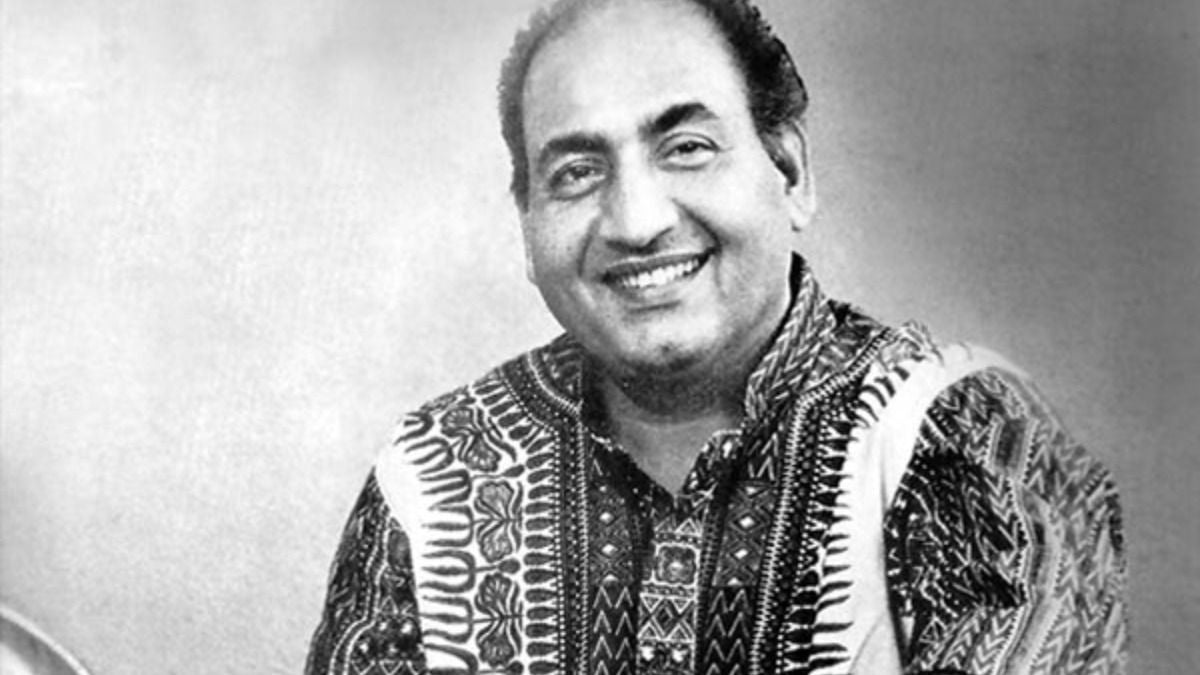Super Troupers : And why the World sings along with ABBA

Few pop acts have bridged generations as effortlessly as ABBA. Once written off as Eurovision winners, they proved masters of craft; their songs were at once simple and sophisticated, designed for both immediacy and longevity.
Their paradox was clear: melodies that seemed childlike in clarity but carried hidden complexity. Benny Andersson’s classical leanings added unexpected chord turns, Björn Ulvaeus imposed structural precision, and the voices of Agnetha Fältskog and Anni-Frid Lyngstad fused into a crystalline blend of Soprano and Mezzo. This combination created ABBA’s signature “happy-sad” tension, a brightness undercut by melancholy that made their songs resonate far beyond Sweden.
ABBA absorbed influences from Schlager, Folk, Disco, and early Synth textures. Arrival delivered their breakthrough sound, Voulez-Vous mirrored disco without losing melodic precision, Super Trouper balanced optimism with shadow, and The Visitors foreshadowed 1980s synth-pop. Their records were engineered for radio yet carried layers that rewarded deeper listening.
This polish enabled global reach. Their plainspoken lyrics, often centered on love, longing, and resilience, cut across borders and demographics. Songs like Dancing Queen and The Winner Takes It All became soundtracks to weddings, heartbreaks, and communal celebrations. As a result, for many, ABBA’s music was less discovered than inherited.
Today, ABBA is thriving in ways few legacy acts can claim. Gen Z now accounts for half of the band’s global Spotify streams. In July 2025, Gimme! Gimme! Gimme! crossed the billion-stream mark. Their total streams have risen 150% in five years, reaching 35 million monthly listeners. Gen Z has been central to this resurgence: viral dances, nostalgic edits, and remixes have driven over 11 million first-time discoveries in 2025 alone. Beyond streaming, their digital-avatar live show ABBA Voyage in London continues to attract younger audiences who encounter the band in an entirely new way.
ABBA distilled pop to its essentials. To revisit them is to hear the blueprint of modern pop; songs resilient enough to be endlessly reimagined, yet emotionally clear enough to connect across time.
People Need Love (1972)
ABBA’s very first single, released under the name Björn & Benny, Agnetha & Anni-Frid. A light pop track with a soft-rock feel, it marked the four singing together on record. The song’s modest success in Sweden hinted at the blend of voices and style that would later define them globally.
Ring Ring (1973)
Originally meant for Eurovision but not selected, this upbeat track with Phil Spector-style “wall of sound” production gave ABBA their first real European hit. Its catchy chorus and glossy arrangement previewed their future sound. Within the band, this was the moment they began seriously pursuing an international career.
Waterloo (1974)
The Eurovision breakthrough. With glam-rock guitars, saxophone flourishes, and irresistible hooks, Waterloo won them the contest in Brighton. It transformed ABBA from local hopefuls into global pop contenders. The victory also cemented their identity as a group, pushing the four to commit fully to ABBA as a singular act.
Honey, Honey (1974)
From the Waterloo album, this song showed their early knack for playful, youthful pop. Layered harmonies and sugary production created an accessible European hit. While not a blockbuster in the US, it helped ABBA sustain momentum after Eurovision, proving they weren’t destined to be a one-hit novelty act.
SOS (1975)
One of ABBA’s finest early moments, SOS combined melancholy lyrics with soaring pop brilliance. Benny’s piano anchors the arrangement, while Agnetha’s emotive lead captures desperation and longing. Critically, it silenced skeptics who dismissed them as Eurovision fluff and marked their shift toward more emotionally nuanced, mature songwriting.
Mamma Mia (1975)
Driven by marimbas and chugging guitar riffs, Mamma Mia became an international smash. Its infectious chorus cemented ABBA’s global stardom. Released during a period of creative confidence, it also highlighted the group’s skill in marrying novelty-like hooks with lasting sophistication, later becoming the title track for their stage musical revival.
Fernando (1976)
Originally a solo track for Frida, Fernando became one of ABBA’s biggest worldwide sellers. A ballad about nostalgia and memory wrapped in Mexican-inspired instrumentation, it broadened their reach. It also showcased ABBA’s ability to fuse storytelling with pop, moving beyond pure romance themes toward broader emotional landscapes.
Dancing Queen (1976)
ABBA’s signature song and perhaps the most recognizable pop track of the 20th century. A disco-inflected anthem with euphoric piano glissandos and layered harmonies, it captured joy tinged with melancholy. Released just as disco peaked, it made ABBA true global icons, topping charts worldwide, including their only US No.1.
Money, Money, Money (1976)
Dark, theatrical, almost vaudevillian in tone, this track revealed ABBA’s range. Frida’s dramatic vocals gave the song its edge, contrasting sharply with their sunnier hits. Released at a time of mounting fame, it showed they weren’t afraid to experiment with tone while still producing chart-ready, instantly memorable songs.
Knowing Me, Knowing You (1977)
One of ABBA’s most poignant songs, reflecting the strains beginning to surface in the group’s personal relationships. Built around crisp guitar lines and melancholy harmonies, it deals with separation and regret. Its chart success marked ABBA’s shift toward more emotionally mature themes, foreshadowing the personal turmoil to come.
The Name of the Game (1977)
A slower, more introspective single with unusual structure and jazz-influenced chords, it showed the band stretching creatively. The lyrics wrestle with uncertainty in love, sung with vulnerability by Agnetha. Released during the ABBA: The Album era, it positioned them as more than just purveyors of straightforward pop.
Chiquitita (1979)
Premiered at a UNICEF concert, Chiquitita combined a humanitarian platform with soaring pop craft. Its Andean-flavored arrangement and uplifting chorus masked lyrics of comfort and sadness. Reflecting ABBA’s global reach, the song became an anthem in Latin America, cementing their ability to speak across cultures with emotional directness.
I Have a Dream (1979)
A ballad with folk influences and children’s choir, I Have a Dream revealed ABBA’s softer, inspirational side. Released at a time of massive touring, it underscored their global accessibility. The song became a Christmas staple in Europe, offering simple hope at a moment when the band faced personal strains.
Super Trouper (1980)
A song about the loneliness of fame, delivered with bittersweet cheer. The upbeat arrangement, built around a marching rhythm, contrasted with lyrics of isolation. Released during heavy touring schedules, it reflected the pressures of constant visibility, giving fans an honest glimpse into the strains behind ABBA’s glittering façade.
The Winner Takes It All (1980)
Perhaps ABBA’s most devastating song, sung by Agnetha with raw vulnerability. Widely interpreted as reflecting Björn and Agnetha’s divorce, it pairs grand melodies with stark emotional honesty. At once deeply personal and universally relatable, it’s proof of how ABBA turned private pain into enduring, global pop masterpieces.
ABBA Voyage at the ABBA Arena (London)
ABBA’s resurgence today owes much to younger audiences, with Gen Z now driving half of the group’s global Spotify streams through viral TikTok edits, remixes, and dance trends. That same audience has also embraced ABBA Voyage in London, a groundbreaking live show where digital avatars of the band perform with a live orchestra inside a purpose-built arena. Together, streaming culture and this futuristic concert experience have reintroduced ABBA’s timeless catalogue to a new generation, making their music feel both nostalgic and contemporary.
Mamma Mia! (The Musical)
Since premiering in London’s West End in April 1999, Mamma Mia!—with a book by Catherine Johnson, music by Benny Andersson and Björn Ulvaeus, produced by Judy Craymer and directed by Phyllida Lloyd—has become a global theatrical phenomenon. Translated into numerous languages and staged across six continents in over 60 countries to more than 70 million people, it has spawned two blockbuster films and multiple international tours.




Comments
Elias Bitcoin/Blank ATM Card — 5 days ago
Good day.
Am Greg Elias Bitcoin/Blank ATM Card.
Have you been trying to get a blank ATM Card Or invest into Bitcoin And a good hacker that can help you out? and it has been an issue due to you can get right person to make your order from? Here at
( investmentcards247@gmail.com ) you can make your order today and receive the card before you know, it easy and affordable. Contact us
now at: investmentcards247@gmail.com
We have special cash loaded programmed ATM card and bitcoin for you to meet up with those needs of yours and also start up your own business as my cards can be use in any part of the world at any ATM machines, stores and POS. With a daily limit of $3000 to $50,000.00 and
available in any currency with our programmed cards. Contact me at:
investmentcards247@gmail.com
Why waste your time waiting for a monthly salary. When you can make over $10,000 in 24hours from home
5X times your investment on 5hours cash out;
Invest $200 profit is $1,000
Invest $300 profit is $1,500
Invest $500 profit is $2,500
Invest $1,000 profit is $5,000
Invest $2,000 profit is $10,000
Invest $3,000 profit is $15,000
Invest $5,000 profit is $25,000
Cost of cards available;
$3000 cost $200
$6000 cost $400
$9000 cost $600
$12,000 cost $900
$15,000 cost $1,200
$18,000 cost $1,500
$21,000 cost $1,800
$25,000 cost $2,500
Contact us with the follow information below now at investmentcards247@gmail.com
Full Name :
Country:
State:
Phone Number:
Date of birth:
Home Address:
Amount needed/Amount to invest:
Email address: investmentcards247@gmail.com
You can never been so sure on till you have giving it a try by contacting us today for your order..
Thanks.
Greg Elias.
TITI — 9 days ago
Greetings to everyone that is reading this testimony. I had been rejected by my husband after five(5) years of our marriage just because another woman had cast a hex spell on him and he left me with 2 kids to suffer. One day when i was reading through the web, i saw a post on how he help a woman to get back her lover and i gave him a chance he told me that my husband is under a spell, he said that he will help me and after 7 market days that i will have my husband back. i believed him and today i am glad to let you all know that this spell caster has the power to bring lovers back now my husband is back after 7 days . he also gave me a financial magic ring to boost my business and removed bad luck. i am now happy with my husband. Thanks you Papa Adelli please contact Email (papaadelli0@gmail.com) Or what’s app +2347047075524
TITI — 9 days ago
Greetings to everyone that is reading this testimony. I had been rejected by my husband after five(5) years of our marriage just because another woman had cast a hex spell on him and he left me with 2 kids to suffer. One day when i was reading through the web, i saw a post on how he help a woman to get back her lover and i gave him a chance he told me that my husband is under a spell, he said that he will help me and after 7 market days that i will have my husband back. i believed him and today i am glad to let you all know that this spell caster has the power to bring lovers back now my husband is back after 7 days . he also gave me a financial magic ring to boost my business and removed bad luck. i am now happy with my husband. Thanks you Papa Adelli please contact Email (papaadelli0@gmail.com) Or what’s app +2347047075524
TITI — 9 days ago
Greetings to everyone that is reading this testimony. I had been rejected by my husband after five(5) years of our marriage just because another woman had cast a hex spell on him and he left me with 2 kids to suffer. One day when i was reading through the web, i saw a post on how he help a woman to get back her lover and i gave him a chance he told me that my husband is under a spell, he said that he will help me and after 7 market days that i will have my husband back. i believed him and today i am glad to let you all know that this spell caster has the power to bring lovers back now my husband is back after 7 days . he also gave me a financial magic ring to boost my business and removed bad luck. i am now happy with my husband. Thanks you Papa Adelli please contact Email (papaadelli0@gmail.com) Or what’s app +2347047075524
may — 11 days ago
There are a lot of untrue recommendations and impostors, its hard to tell who is legit. If you have been scammed by fake crypto investors, lost money to scammers, I refer you to contact (cfranklyassetrecovery@gmail.com) they will surely help you out. Took me long to find them. Telegram @chrisfrankly
Big Bull —
SELLING FULLZ SSN USA NIN UK SIN CANADA
AUS SPAIN ITALY GERMANY Fullz available
Fresh Stuff & Fresh Spammed
Available in bulk quantity
Valid & guaranteed info
DL front back with selfie
DL with issue & exp dates
DL with SSN
SSN DOB DL ADDRESS—> USA
NIN DOB DL ADDRESS—> UK
SIN DOB ADDRESS MMN—> CANADA
Tax Return Filling Fullz & KYC Stuff
HACKING & SPAMMING TOOLS & TUTORIALS
COMPLETE PACKAGES WITH ALL TOOLS & TUTORIALS INCLUDED
SCAM PAGES|SCRIPTING
CASH OUT & CARDING STUFF
LOAN METHODS & CARDING METHODS
Many Other stuff for cashing out|filling for loans|KYC
All stuff will be 101% Genuine, nothing generated or edited
Contact us here only (Be aware from scammers)
Telegram – @ killhacks ’ @ leadsupplier
What’s App – +1 7277..88..612..9
TG Channel – t.me/ leadsproviderworldwide
Email – hacksp007 at gmail dot com
VK Messenger – @ leadsupplier
USA STUFF:
SSN DOB ADDRESS FULLZ
SSN DOB DL ADDRESS FULLZ
SSN DOB DL ADDRESS EMPLOYMENT & BANK INFO FULLZ
SSN DOB DL ADDRESS DL ISSUE & EXP INFO FULLZ
FULLZ WITH MVR
USA DL|ID FRONT BACK WITH SELFIE & SSN
USA LLC DOCS
USA W-2 FORMS
USA Passport Photos
High Credit Scores Pros
SweepStakes & Dead Fullz
Business EIN Company Pros|EIN Lookup
Dumps & CC with CVV
-———————————————————————-
UK (UNITED KINGDOM) STUFF:
NIN DOB ADDRESS FULLZ
NIN DOB DL ADDRESS FULLZ
NIN DOB DL ADDRESS SORT CODE & ACCOUNT NUMBER FULLZ
High Credit Scores Pros Fullz
UK DL Front Back with Selfie
UK Email & Phone number Leads
UK Passports
Consumer Leads UK
Bank Leads with sort code & account number UK Fullz
-———————————————————————-
CA (CANADA) STUFF:
SIN DOB ADDRESS FULLZ
SIN DOB ADDRESS MMN FULLZ
SIN DOB ADDRESS MMN PHONE POST CODE FULLZ
Canada DL Front Back with Selfie
CA Email & Phone Number leads
High Credit Score Fullz
Canada Passports
-————————————————————————
OTHER STUFF WE’RE PROVIDING WITH GUARANTEE:
EMAIL LEADS (Crypto|Unemployment|Casino|Medical|Health|Office365)
Car Database with Vehicle registration numbers
Email Combos
I.P & Proxies
Different type of Docs available
TOOLS AVAILABLE
SMTP RDP SHELLS C-PANELS
KALI LINUX
RATS & VIRUSES
Web-Mailers
SMS & Email Senders
Scam Pages & Scripting
Office365 Spamming Stuff
#FULLZ #TOOLS #TUTORIALS #EBOOKS #USAFULLZ #UKFULLZ #CAFULLZ #DLPHOTOS
#HACKING #SPAMMING #CARDING #SPOOFING #LEADSUSA #COMBOS #CRYPTOLEADS
#UKLEAD #CANADALEADS #HIGHCREDITSCOREPROS #CRYPTOPAYMENTS #PROS #OFFICE365
#SENDERS #FULLZSHOP #DUMPSCVV #CCFULLZ #USACC #FULLZDUMPS #DUMPSID #DUMPSDL
#EMAILLEADS
Contact here only (Be aware from scammers)
Telegram – @ killhacks ’ @ leadsupplier
What’s App – +1 7277..88..612..9
TG Channel – t.me/ leadsproviderworldwide
Email – hacksp007 at gmail dot com
VK Messenger – @ leadsupplier
MRS DEJANA IVICA —
TANGIBLE INFORMATION ABOUT CHRISTMAS LOAN FOR PLANNING…
This is not a normal post that you see every day on the internet where people make false statements and false information about huge financial assistance.. I am aware that many of you have been scammed and that fake agents have taken advantage of those seeking loans. I will not call this a normal statement, I will call this situation where I live a witness to how you can get your loan when you meet the company’s requirements. It really does not matter to have a good credit rating or government approval, all you need is a valid ID card and a valid IBAN number to be able to apply for a loan with an interest rate of 3%. The minimum amount is 1000 euros and the maximum amount that can be borrowed is 100,000,000 euros. I give you a 100% guarantee that you can get your loan through this reliable and honest company, we operate 24 hours online and provide loans to all citizens of Europe and outside Europe. They sent me a document that was checked and tested as valid before I got the loan, so I invite anyone who needs a loan to visit them or contact them via
Email: michaelgardloanoffice@gmail.com
WhatsApp for Europe: +385915608706
WhatsApp for USA: +1 (717) 826-3251
After you contact them, let them know that Ms. Dejana Ivica from Zagreb gave you the information. Seeing is believing and you will thank me later when you get a loan from them. I made a promise that after I get a loan from them, I will post the good news to everyone online. If you have friends or relatives, including colleagues, you can tell them about this offer and that it is happening this CHRISTMAS. …….
MRS DEJANA IVICA —
TANGIBLE INFORMATION ABOUT CHRISTMAS LOAN FOR PLANNING…
This is not a normal post that you see every day on the internet where people make false statements and false information about huge financial assistance.. I am aware that many of you have been scammed and that fake agents have taken advantage of those seeking loans. I will not call this a normal statement, I will call this situation where I live a witness to how you can get your loan when you meet the company’s requirements. It really does not matter to have a good credit rating or government approval, all you need is a valid ID card and a valid IBAN number to be able to apply for a loan with an interest rate of 3%. The minimum amount is 1000 euros and the maximum amount that can be borrowed is 100,000,000 euros. I give you a 100% guarantee that you can get your loan through this reliable and honest company, we operate 24 hours online and provide loans to all citizens of Europe and outside Europe. They sent me a document that was checked and tested as valid before I got the loan, so I invite anyone who needs a loan to visit them or contact them via
Email: michaelgardloanoffice@gmail.com
WhatsApp for Europe: +385915608706
WhatsApp for USA: +1 (717) 826-3251
After you contact them, let them know that Ms. Dejana Ivica from Zagreb gave you the information. Seeing is believing and you will thank me later when you get a loan from them. I made a promise that after I get a loan from them, I will post the good news to everyone online. If you have friends or relatives, including colleagues, you can tell them about this offer and that it is happening this CHRISTMAS.